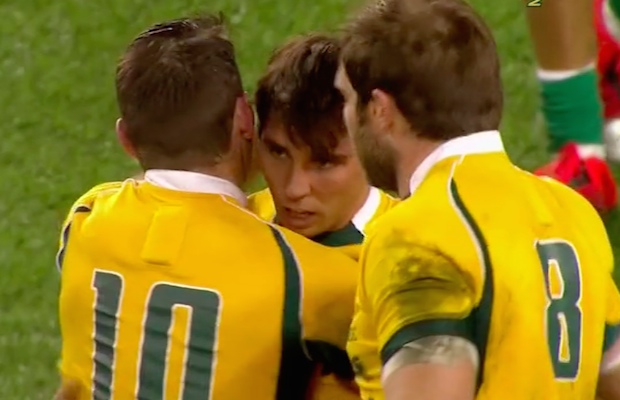In a pre-match interview Joe Schmidt praised the efficiency and variety of the Wallaby line-out and the need for a stable scrum, against the Australian hit and chase. Schmidt, Sexton and O’Connell all see Ireland as a performance, focused-driven squad. Michael Cheika is honest in his analysis of team and player performance. He is a day-by-day coach; the players know what’s required. There is a similarity between the coaches, but the Wallabies team performance and playing tempo is ahead of Ireland’s in both attack and defensive organisation.
However, if you play with quick ball and tempo early in the game it requires accuracy and vision when making passes, commitment to the high ball, and correct body height when taking the ball forward. The Wallabies failure to achieve this contributed to Ireland’s 17 points.
The resultant turn-around came out of a belief in the Wallabies playing style, an improvement in passing accuracy, a willingness of individuals to support on either side of the ball carrier – from depth and with acceleration.
Phipps’ energy was crucial in launching the fight back. In the halcyon days of French rugby they could load a narrow channel with attackers, and defenders couldn’t get close to the ball carrier, and if one did, the ball was simply “given” to the next attacker. The Wallabies are showing signs of re-inventing this lost art (see below). It will add to the potency of their attack.
Players have to learn from what they are involved in during the game. Both Jones and Speight became serial offenders when taking the ball into contact. It is inexcusable at any level to repeat offend, and body height into contact is taught at an early age! When Ireland turned the ball over they were able to attack close to the turn over as the Wallaby attack was spreadeagled!
Ireland offered little in constructive back play after half time. Darcy may soon follow O’Driscoll, and Sexton needs a centre who can run ahead of him before he makes his trade mark looping run. You can’t run an effective loop running back towards the ball carrier, he has to get in front of you. His chip kicks may also be the subject of some post-game discussion?
Winning the ball at the tackle contest had a distinctly New Zealand look to it. The first player attacked the ball; everyone else on either side was wiped out! Tackle the tackler, then anyone in close proximity!
Line-speed replaced the “offside whistle”. Glen Jackson, the New Zealand referee, was liberal in his application of the offside law. His support crew on either flank did little to help. Skilful play was replaced by “heavy collision and let’s see what we can do afterwards”.
I can’t help thinking the All Blacks would have used more second man plays to keep the ball away from the rushing, offside, defence? Maybe Folau was at fault here in not demanding early passes or was it Foley’s inability to find the solution.
The second half failed to ignite and the game slowed in pace. Maybe both sets of players were happy to win by three, but performance is more important than the score-board, surely?
Energy returned to the Wallaby attack when arguably three of the best attackers in World rugby took the field. Beale runs great inside lines but needs to address both his timing and angle of entry; come a little straighter, from depth and closer to the ball carrier. Genia doesn’t need to take a step before he passes the ball and Cooper’s instinctive play benefits greatly from this, giving him time to attack the line and produce sublime offloads, such as the one Simmons took to score his first test try against France.
I suspect all three will start against England and that could set fire to the hallowed turf of Twickenham and produce a comfortable win.



